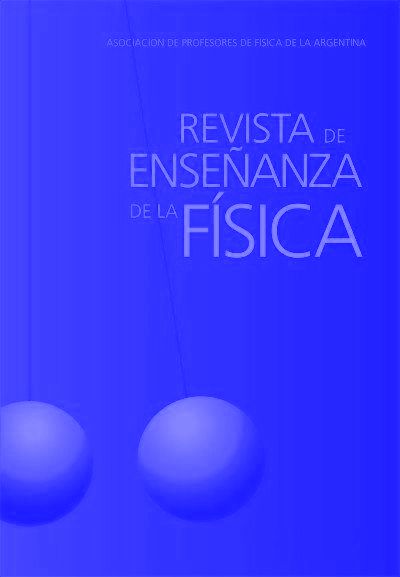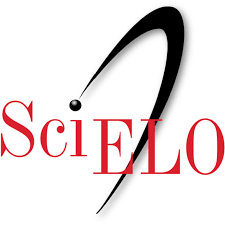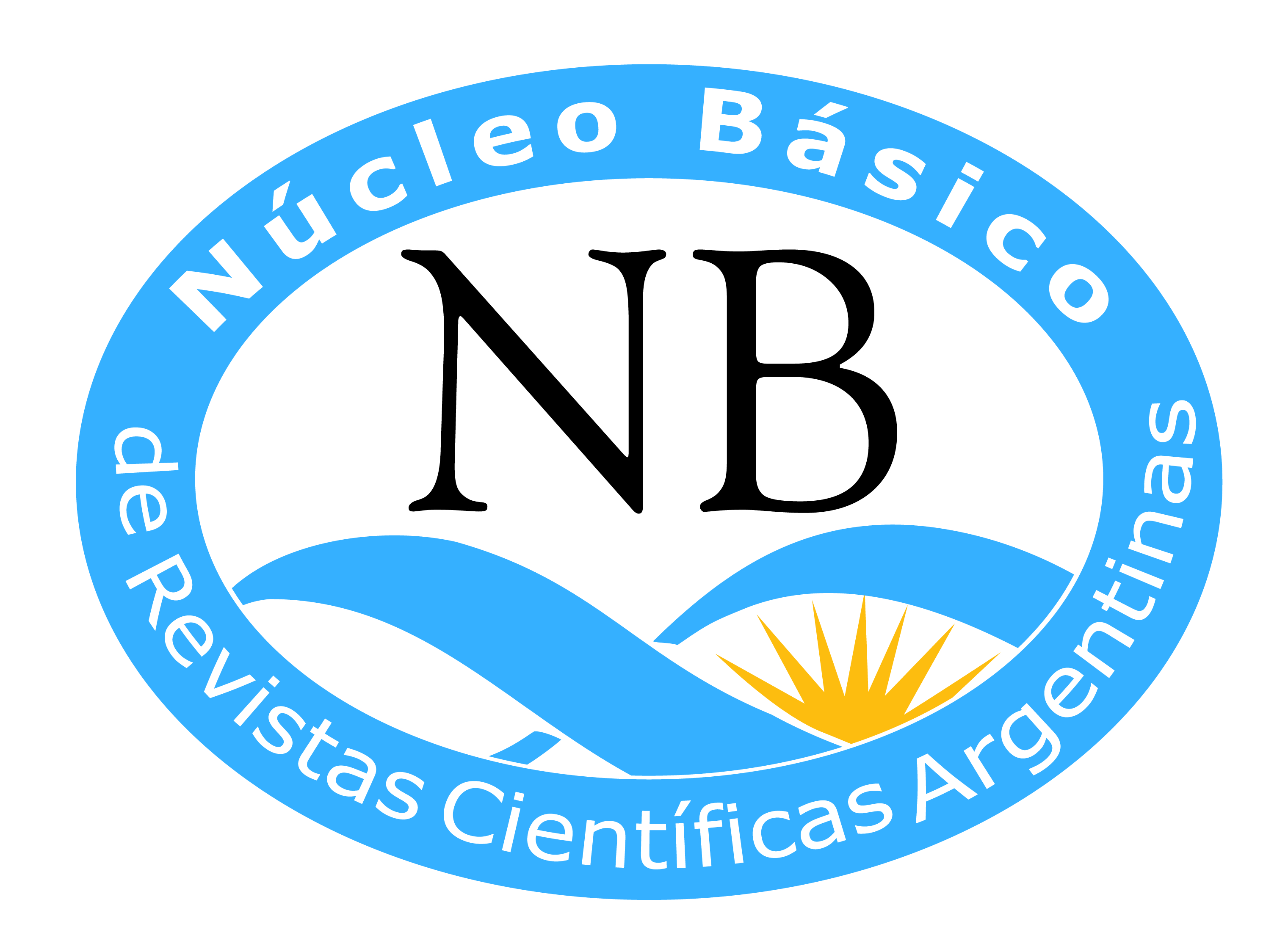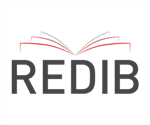Physics learning, ICT and the study of the fastest man in the world
DOI:
https://doi.org/10.55767/2451.6007.v33.n1.33269Keywords:
Teacher education, Physics, Numeric methods, Solve problemsAbstract
The objective of this study is to investigate the didactic potentialities of the use of technology to develop conceptual, procedural and attitudinal learning in the formation of Physics teachers. Physics teacher education must address the role of technology to
influence or facilitate active, meaningful and creative learning based on real world problems. Research on the didactic potential of
the use of numerical methods in the construction of models in the cognitive, procedural and attitudinal learning of physics teachers
in initial training is insufficient in the specialized literature. The kinematic, dynamic and energetic study of the fastest man in the
world and his performance arouses great interest in students to know the characteristics and factors that allowed establishing the
world record in the 100 m dash. Currently it is required to provide teachers with a robust system of cognitive, procedural-strategic
and attitudinal content through the resolution of problems of socio-cultural, personal or professional interest. This article analyzes
the results obtained in the learning of a group of physics teachers in training in terms of concepts, skills and attitudes from the
resolution of interesting problems in the real world.
References
Ariza, M. R. y Quesada, A. (2014). Nuevas tecnologías y aprendizaje significativo de las ciencias. Enseñanza de las Ciencias, 32(1), 101-115
Benarroch, A., Núñez, G. I., (2015) Aprendizaje de competencias científicas versus aprendizaje de contenidos específicos. Una propuesta de evaluación. Enseñanza de las Ciencias, 33(2), 9-27.
Beneke, R. y Taylor, M. J. (2010). What gives Bolt the edge-AV Hill knew it already! Journal of Biomechanics, 43(11), 2241-2243.
Bigliani, J. C., Capuano, V. C., Gutiérrez, E. A., y Martín, J. (2017). Práctica experimental con equipos cotidianos para los alumnos, y de mejores resultados experimentales. Revista de Enseñanza de la física, 29,391-400.
Buzzo, R. (2007), Estrategia EE (Excel-Euler) en la enseñanza de la física- Latin-American Journal of Physics Education, 1(1), 19-23.
Cassan R, Laura R y Rosolio A. (2018). Resultados del uso del cálculo numérico para el aprendizaje de la mecánica elemental. Revista de Enseñanza de la física. 30(Extra), 351-358.
Charles, J.D. y Bejan, A. (2009). The evolution of speed, size and shape in modern athletics. Journal of Experimental Biology, 212(15), 2419-2425. doi: 10.1242/jeb.031161.
Čoh, M. (2019). Usain Bolt: biomechanical model of sprint technique. Physical Education and Sport, 17(1), 1- 13.doi.org/10.22190/FUPES190304003C
Čoh, M., Hébert-Losier. K., Štuhec. S., Babić. V. y Supej. M. (2018). Kinematics of Usain Bolt’s maximal sprint velocity. Kinesiology, 50(2), 172-180. doi.org/10.26582/k.50.2.10
Coll, R. K., Dahsah, C. y Faikhamta, C. (2010). The influence of educational context on science learning: A cross-national analysis of PISA. Research in Science & Technological Education, 28(1), 3-24. https://doi.org/10.1080/02635140903513532
Conner, L. y Sliwka, A. (2014). Implications of Research on Effective Learning Environments for Initial Teacher Education. European Journal of Education, 49(2), 165-177. http://dx.doi.org/10.1111/ejed.12081
Deanna, K. (2012). The development of causal reasoning. Wiley interdisciplinary reviews. Cognitive science, 3(3). En: https://www.ncbi.nlm.nih.gov/pubmed/26301465
Díaz N., Jiménez-Liso M. R. (2012) Las controversias sociocientíficas: Temáticas e importancia para la educación científica. Revista Eureka sobre Enseñanza y Divulgación de las Ciencias 9, 54-70.
Duschl, R. A. (2008). Science education in three-part harmony: Balancing conceptual, epistemic, and social learning goals. Review of Research in Education, 32(1), 268–291.
Eriksen, H.K., Kristiansen, J.R., Langangen, Ø. y Wehus, I.K. (2009). How fast could Usain Bolt have run? A dynamical study. American Journal of Physics, 77(3), 224-228.
Escudero, T. (2016). La investigación evaluativa en el siglo XXI: un instrumento para el desarrollo educativo y social cada vez más relevante. Relieve, 22(1), art. 4, 1-21. http://dx.doi.org/10.7203/relieve.22.1.8164
Furtak, E. M. (2006). The problem with answers: An exploration of guided scientific inquiry teaching. Science Education, 90(3), 453–467.
Garritz, A. (2010). La enseñanza de la ciencia en una sociedad con incertidumbre y cambios acelerados. Enseñanza de las Ciencias, 28(3), 0315-326.
Gil, D., Sigfredo, C., Valdés, P. y Vilches, A. (2005). ¿Cómo promover el interés por la cultura científica? Santiago: OREALC-UNESCO.
Gómez, J.H., Marquina, V. y Gómez, R.W. (2013). On the performance of Usain Bolt in the 100 m sprint. European Journal of Physics, 34(5), 1227.
Graubner, R. y Nixdorf, E. (2011). Biomechanical analysis of the sprint and hurdles events at the 2009 IAAF World Championships in Athletics. New Studies in Athletics, 26(1/2), 19-53.
Guisasola, J., Barragués, J., Valdés, P, Valdés R y Pedroso F. (1999). Getting students familiar with the use of computers: study of the falling of a body in a fluid. Physics Education, 34(4), 214-219.
Hernández, M. I., Couso, D. y Pintó, R. (2015). Analyzing students’ learning progressions throughout a teaching sequence on acoustic properties of materials with a model-based inquiry approach. Journal of Science Education Technology, 24(2-3), 356–377.
Hodson, D. (2014). Learning science, learning about science, doing science: different goals demand different learning methods. International Journal of Science Education, 36(15), 2534-2553.
Kayumova, S. y Tippins, D. (2016). Toward re-thinking science education in terms of affective practices: reflections from the field. Cultural Studies of Science Education, 11(3), 567-575.
Lakshmanan, A., Heath, B. P., Perlmutter, A. y Elder, M. (2011). The impact of science content and professional learning communities on science teaching efficacy and standards-based instruction. J Res Sci Teach, 48(5), 534–551.
Leilani A. y Bailey K. (2017) An integrative review of in-class activities that enable active learning in college science classroom settings, International Journal of Science Education, 39:15, 2073-2091, doi: 10.1080/09500693.2017.1363925
Maćkała, K. y Mero, A. (2013). A kinematics analysis of three best 100 m performances ever. Journal of Human Kinetics, 36, 149-160. doi: 10.2478/hukin-2013-0015.
Marchall, N. (2004). Interaction of step length and step rate during sprint running. Medicine & Science in Sports & Exercise, 261-70
Martínez-Torregrosa, J., Alemany, F., Blanco, J., Cubero, A. y Cintas, S. (2016). La enseñanza problematizada de la física cuántica en el nivel introductorio. Una propuesta fundamentada. Revista de Enseñanza de la física, 28(2), 77-100.
Meltzer, D. y Otero, V. (2014). Transforming the preparation of physics teachers, Am. J. Phys. 82, 633.
Nielsen, J. A. (2012) Science in discussions: An analysis of the use of science content in socioscientific discussions. Science Education 96, 428–456.
OECD. (2014). TALIS 2013 Results: An international perspective on teaching and learning. Paris: OECD Publishing. http://dx.doi.org/10.1787/9789264196261-en
Parker, C. E., Stylinski, C. D., Bonney, C. R., Schillaci, R. y McAuliffe, C. (2015). Examining the quality of technology implementation in STEM classrooms: Demonstration of an evaluative framework. J Res Technol Educ, 47(2), 105–121
Pérez, A., y Sánchez, R. (2015). La enseñanza de la física General I en la formación de profesores de Matemática-Física. Un enfoque interdisciplinario. Atenas, 2(30), 65-77. Disponible en: http://atenas.mes.edu.cu
Pozo, J. I. (2006). Las concepciones del aprendizaje ante la nueva cultura educativa. En Nuevas formas de pensar la enseñanza y el aprendizaje (29-54). Barcelona: Graó
Quintanilla, M. (2012). Investigar y evaluar competencias de pensamiento científico (CPC) en el aula de secundaria. Alambique, 70, 66-74.
Sanmartí, N. y Marchán, I. (2015). La educación científica del siglo XXI: retos y propuestas. Investigación y ciencia, 469, 30-38.
Solbes, J. (2013). Contribución de las cuestiones sociocientíficas al desarrollo del pensamiento crítico (I): Introducción. Revista Eureka sobre Enseñanza y Divulgación de las Ciencias 10(1),1-10.
Thornton, R. K. y Sokoloff D. R. (1998). Assessing student learning of Newton's laws: The Force and Motion Conceptual Evaluation and the Evaluation of Active Learning Laboratory and Lecture Curricula, Am. J. Phys., 66, 338-352.
Valdés, P. y Valdés, R. (1999). Características del proceso de enseñanza aprendizaje de la física en las condiciones contemporáneas. Enseñanza de las Ciencias, 17 (3), 521-531.
Valdés, P., Valdés R., Fundora J., Pedroso F., Moltó E., Pérez Z. (2002). Enseñanza de la física Elemental. La Habana: Pueblo y Educación.
Vázquez, A. y Manassero, M.A. (2009). La relevancia de la educación científica: actitudes y valores de los estudiantes relacionados con la ciencia y la tecnología. Enseñanza de las Ciencias, 27(1), 33-48.
Vilches, A. y Gil, D. (2007). La necesaria renovación de la formación del profesorado para una educación científica de calidad. Tecné, Episteme y Didaxis TED, 22, 67-85.
Waight, N. y Abd‐El‐Khalick, F. (2018). Technology, culture and values: Implications for enactment of technological tools in precollege science classrooms. En Y. J. Dori, Z. Mevareach, y D. Baker (Eds.), Cognition, metacognition and culture in STEM education (139– 165). New York: Springer.
Zion, M., Cohen, S., y Amir, R. (2007). The spectrum of dynamic inquiry teaching practices. Research in Science Education, 37(4), 423–447.
Redish, E. F. (1993). Are computers appropriate for teaching physics? Computers in Physics, 7(6), 613. https://doi.org/10.1063/1.4823227
Velasco, J., Buteler, L., (2017). Simulaciones computacionales en la enseñanza de la física: una revisión crítica de los últimos años. Enseñanza de las Ciencias, 35(2), 161-178.
Downloads
Published
Issue
Section
License
Copyright (c) 2021 Francisco Pedroso Camejo

This work is licensed under a Creative Commons Attribution-NonCommercial-NoDerivatives 4.0 International License.
Aquellos autores/as que tengan publicaciones con esta revista, aceptan los términos siguientes:Los autores/as conservarán sus derechos de copiar y redistribuir el material, bajo los términos estipulados en la Licencia de reconocimiento, no comercial, sin obras derivadas de Creative Commons que permite a terceros compartir la obra bajo las siguientes condiciones:
- Reconocimiento — Debe reconocer adecuadamente la autoría, proporcionar un enlace a la licencia e indicar si se han realizado cambios. Puede hacerlo de cualquier manera razonable, pero no de una manera que sugiera que tiene el apoyo del licenciador o lo recibe por el uso que hace.
- NoComercial — No puede utilizar el material para una finalidad comercial.
- SinObraDerivada — Si remezcla, transforma o crea a partir del material, no puede difundir el material modificado.
- Los autores/as podrán adoptar otros acuerdos de licencia no exclusiva de distribución de la versión de la obra publicada (p. ej.: depositarla en un archivo telemático institucional o publicarla en un volumen monográfico) siempre que se indique la publicación inicial en esta revista.
- Se permite y recomienda a los autores/as difundir su obra a través de Internet (p. ej.: en archivos telemáticos institucionales o en su página web) antes y durante el proceso de envío, lo cual puede producir intercambios interesantes y aumentar las citas de la obra publicada. (Véase El efecto del acceso abierto).










